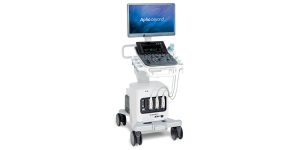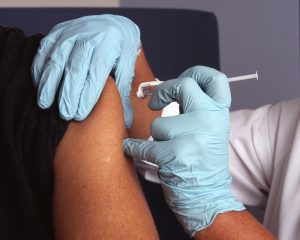Dr. Michel Barsoum, M.B., Ch.B., renowned cardiologist and vascular medicine specialist at Mayo Clinic Health System, offers insights into the latest advancements in diagnosing and treating Peripheral Artery Disease (PAD)
As you go about your daily routine, your body relies on a network of arteries to supply oxygen and nutrients to your organs and tissues.
But what happens when this vital system starts to malfunction?
Peripheral Artery Disease (PAD) is a common condition where the arteries outside of your heart become narrowed or blocked, restricting blood flow to your legs, arms, and other vital organs.
In our cover story, we feature insights from Dr. Michel Barsoum, M.B., Ch.B., a renowned cardiologist and vascular medicine specialist at Mayo Clinic Health System.
Dr. Barsoum provides an in-depth look at the relationship between Coronary Artery Disease (CAD) and Peripheral Artery Disease (PAD).
With his expertise, Dr. Barsoum also explains how these conditions, both linked to atherosclerosis, impact cardiovascular health and emphasizes the importance of understanding the interconnectedness of the coronary and peripheral arterial systems and what key lifestyle choices can make a difference.
What is a Coronary Artery System
The coronary artery system supplies oxygen-rich blood to the heart muscle, ensuring it receives the oxygen and nutrients necessary for proper functioning.
It consists of smaller arteries branching off from the aorta, the main artery carrying oxygenated blood from the heart to the body.
These arteries play a crucial role in maintaining heart muscle health by ensuring continuous blood flow.
The coronary artery system is distinct from the peripheral artery system, which supplies blood to the rest of the body, including multiple organs. Each system has unique functions and is affected differently by conditions like Peripheral Artery Disease (PAD).
Understanding the Peripheral Artery System
The peripheral artery system is a vast network of blood vessels responsible for delivering oxygenated blood to the entire body, excluding the heart muscle.
These arteries vary in size and branch out to multiple organs, playing a crucial role in maintaining overall health by ensuring that your arms, legs, and other vital organs receive the necessary oxygen and nutrients.
Proper blood flow through the peripheral arteries is essential for performing daily activities comfortably and maintaining the health of your extremities.
Disruptions in this flow can lead to serious health issues.
“Peripheral Artery Disease (PAD) can be thought of as a clogging issue affecting the arteries that supply blood to various parts of the body. This condition develops when there’s a gradual buildup of plaque—a mix of calcium, fat, and scar tissue—inside the arteries over time. This buildup narrows the arteries, restricting blood flow and increasing the risk of serious cardiovascular problems.
“The most common and significant cause of PAD is this progressive accumulation of plaque, which can occur for several reasons, including unhealthy lifestyle choices, genetic predisposition, or underlying health conditions. Recognizing the signs of PAD and understanding its causes is crucial for preventing complications and maintaining overall vascular health.”
Distinguishing the Coronary and Peripheral Artery Systems
The coronary artery system specifically supplies blood to the heart muscle.
It consists of smaller, specialized arteries that ensure the heart receives the oxygen and nutrients it needs to function.
In contrast, the peripheral artery system is responsible for delivering blood to the rest of the body, including various organs and tissues, and is made up of larger, more diverse arteries of varying sizes.
Recognizing the distinction between these systems is crucial, as Coronary Artery Disease (CAD) and PAD are interconnected; having one may increase the risk of developing the other.
Dr. Barsoum notes, “The coronary arteries are smaller vessels that supply blood directly to the heart muscle, while the peripheral arterial system supplies blood to the rest of the body, including various organs, and consists of arteries of varying sizes.
“If you have Coronary Artery Disease (CAD), there’s a possibility you might also have Peripheral Artery Disease (PAD), and vice versa. This is because both conditions are related to atherosclerosis, where plaque builds up in the arteries, reducing blood flow and affecting overall cardiovascular health.”
Common Risk Factors
- Nicotine Product Use: Smoking damages the inner lining of arteries, making them more susceptible to plaque buildup. According to the Centers for Disease Control and Prevention (CDC), smokers are four times more likely to develop PAD than non-smokers.
- Diabetes: Diabetes can damage blood vessels and nerves, leading to poor circulation and an increased risk of PAD.
- High Blood Pressure: Hypertension can strain and damage arteries, promoting plaque accumulation.
- High Cholesterol: Elevated cholesterol levels contribute to the formation of plaque in the arteries.
- Large Body Weight: Obesity puts additional strain on arteries and is linked to other risk factors like high blood pressure and diabetes.
- Poor Diet: An unhealthy diet can lead to obesity and high cholesterol.
- Lack of Physical Activity: Sedentary behavior increases the risk of obesity and associated conditions.
- Hereditary Factors: A family history of PAD increases your likelihood of developing the condition.
“The most common risk factor for developing Peripheral Artery Disease (PAD) is the use of nicotine products in various forms. However, other factors like diabetes, high blood pressure, high cholesterol, large body weight, poor diet, and lack of physical activity, along with hereditary factors, all contribute to the onset and acceleration of PAD.”
So, how exactly do lifestyle choices, particularly smoking and diabetes, contribute to the risk of PAD?
“Well, smoking and diabetes are two of the main culprits. They play a significant role in both the development and progression of PAD, leading to poor vascular outcomes.”
According to the Dr., adopting a healthy lifestyle through a balanced diet and regular physical activity can significantly lower your risk.
The American Heart Association recommends at least 150 minutes of moderate-intensity aerobic activity or 75 minutes of vigorous-intensity aerobic activity per week to maintain cardiovascular health.
Impact of Peripheral Artery Disease (PAD)
Peripheral Artery Disease (PAD) often flies under the radar in its early stages, but recognizing its symptoms early can significantly impact your health and quality of life.
As PAD progresses, it can affect not only your legs but also vital areas like the neck arteries, which supply blood to the brain.
- Leg Pain and Weakness: One of the hallmark symptoms of PAD is fatigue or heaviness in the legs, particularly noticeable when walking. This condition, known as intermittent claudication, causes pain that typically subsides with rest but can become more frequent and severe as the disease advances.
- Cold Feet and Discoloration: Reduced blood flow can lead to coldness and discoloration in your feet and toes, which may appear pale or blue. Painful cramping, numbness, or tingling can occur, and in severe cases, open sores or ulcers that are slow to heal may develop. It’s crucial to seek medical attention to prevent further complications like tissue damage or gangrene.
- Carotid Artery Disease and Stroke Risk: PAD can also affect the neck arteries, increasing the risk of stroke. Narrowed or blocked carotid arteries can lead to insufficient oxygen-rich blood reaching the brain, with carotid artery disease accounting for up to 20% of all strokes.
- Cognitive Impairment and Dementia: Reduced blood flow can damage brain tissue, resulting in memory loss, confusion, and decision-making difficulties. Individuals with PAD are at a higher risk of developing vascular dementia due to diminished blood flow to the brain.
“Lower extremity pain that occurs after walking a specific distance and is completely relieved by rest is a classic sign of Peripheral Artery Disease (PAD). Over time, these symptoms can worsen, leading to open sores or even rest pain that might wake you up at night.”
Now, how does PAD affect the neck arteries and brain function?
“The narrowing of neck arteries can often be silent, but if symptoms do appear, they can be quite serious. You might experience vision impairment, lose function in your arms or legs, or have difficulty speaking. Interestingly, dizziness or fainting aren’t typically symptoms of narrowed neck arteries, which can be surprising to some.”
Early recognition and treatment of PAD can help prevent or slow the progression of these serious complications.
Diagnosis and Testing for PAD
To diagnose Peripheral Artery Disease (PAD), your doctor will start with a detailed discussion of your medical history and a physical examination.
They’ll ask about your symptoms, lifestyle habits like smoking and exercise, and look for signs of poor circulation, such as weak pulses in your limbs or slow-healing wounds.
For a clearer picture, your doctor may use imaging studies like vascular ultrasound, computed tomography (CT) scans, magnetic resonance angiography (MRA), or peripheral angiography to visualize the arteries and detect any blockages.
Blood tests will help identify underlying conditions such as high cholesterol or diabetes. An ankle-brachial index (ABI) test, which compares blood pressure in your ankles and arms, can also reveal any narrowing or blockage in your arteries.
“When it comes to treating mild Peripheral Artery Disease (PAD), the first line of defense is making some impactful lifestyle changes. This means cutting out nicotine in all its forms and keeping a tight control on conditions like diabetes, high blood pressure, and high cholesterol. A key part of the treatment is also improving your diet, aiming for weight loss, and committing to a daily walking routine. Just an hour a day—whether in one go or split up—can make a real difference. These steps can help manage symptoms and improve overall vascular health.”
For more severe cases, angioplasty and surgery may be needed. Angioplasty involves inserting a balloon through a catheter to widen the narrowed artery, sometimes with a stent to keep it open.
“If medical management doesn’t work or if there are signs of severe and life-threatening blockages, we use various imaging techniques to assess the situation. This is usually followed by a peripheral angiogram to see if ballooning or stenting might be needed. In more critical cases, open surgery might be necessary to clean out the arteries or use bypass grafts to restore proper blood flow.
“The key is to make lifestyle changes early on—this can help prevent PAD from starting in the first place. If PAD has already begun, making those same changes can slow its progression by reducing the buildup of plaque in the arteries and preventing serious vascular issues down the road.”
Advancements in Vascular Medicine
The field of vascular medicine is rapidly evolving, offering new hope for improving the diagnosis and treatment of Peripheral Artery Disease (PAD).
Advances in imaging have reduced the need for invasive angiography. High-resolution vascular ultrasound is now a key tool, often replacing CT scans and angiography for initial and follow-up diagnostics.
Researchers are developing targeted, personalized treatments that address the root causes of PAD, rather than just its symptoms. The future of PAD treatment is promising, with ongoing research aiming to restore blood flow and enhance vascular health.
“Many patients turn to over-the-counter decongestants for nasal congestion, but medications like phenylephrine and pseudoephedrine can actually worsen artery narrowing. Instead, natural saline solutions might be a safer option.
“On the flip side, advancements in vascular medicine are making a big difference for those with Peripheral Artery Disease (PAD). The huge leap in imaging technology means we now rely less on invasive diagnostic angiography. Vascular ultrasound has become a go-to for both initial and follow-up assessments, often replacing older methods like CT scans and angiography. Plus, MR angiography is becoming more accessible, even outside academic centers, enhancing our ability to diagnose and treat PAD effectively,” Dr. Barsoum concluded.









